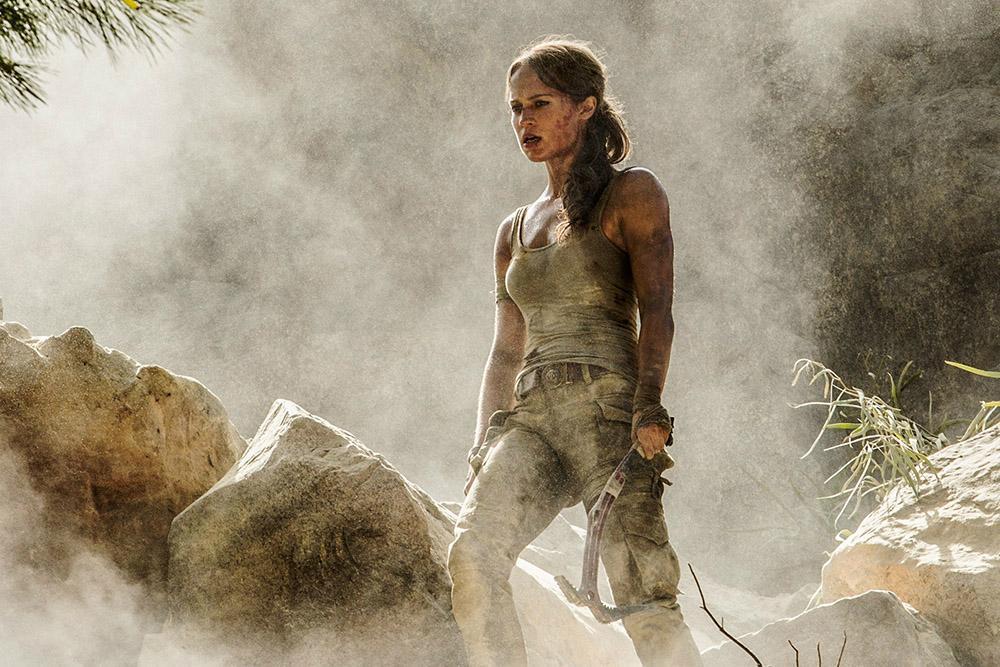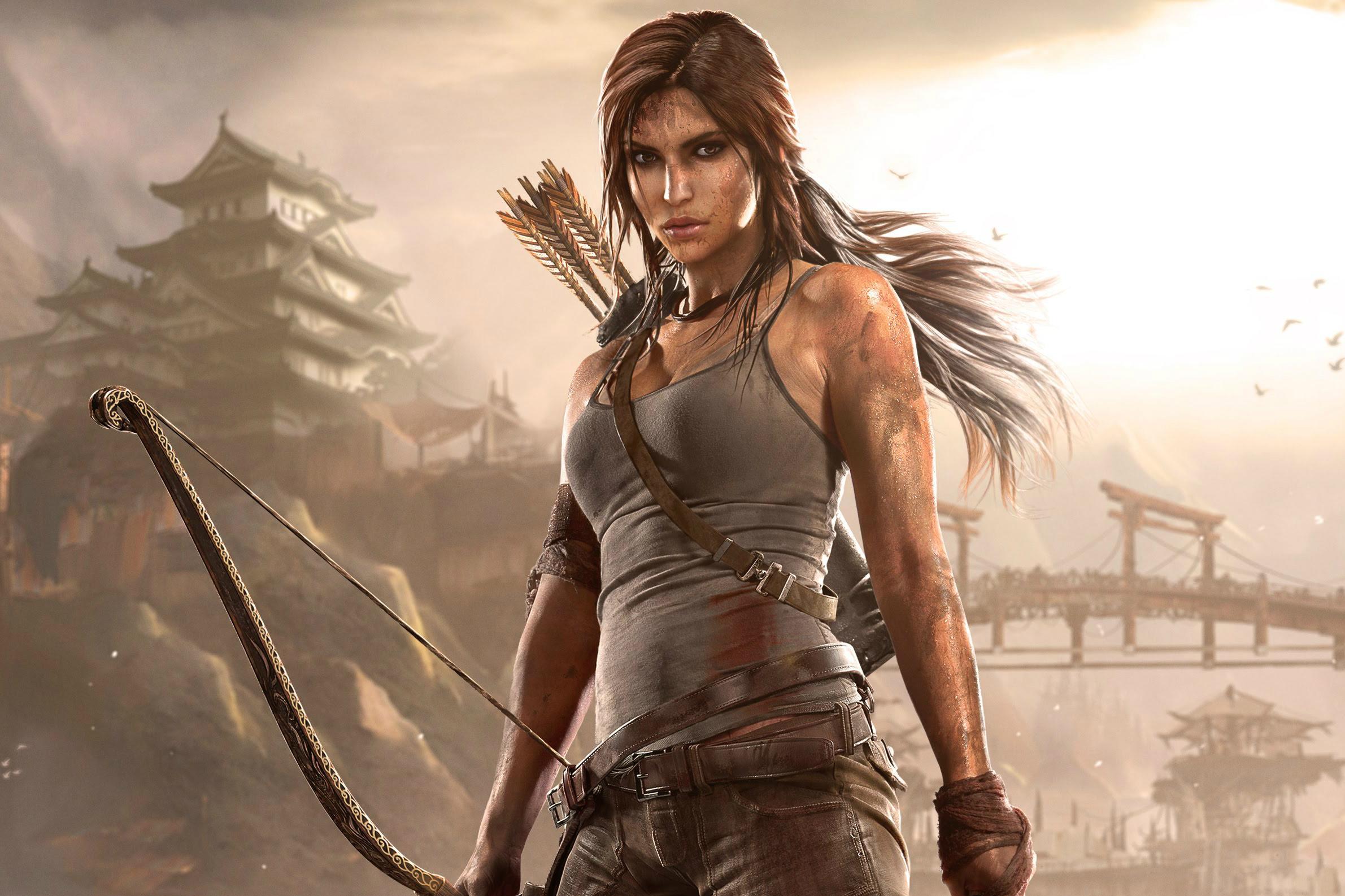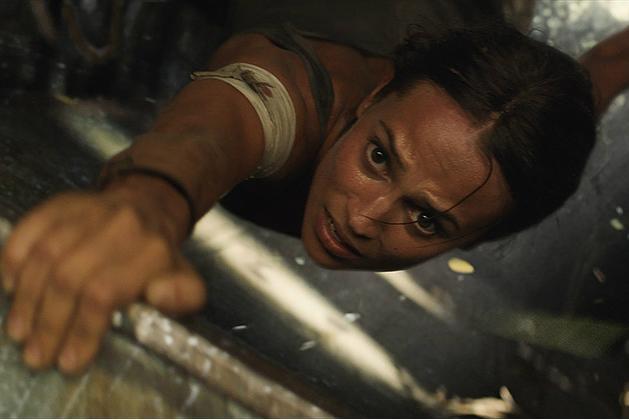The Independent's journalism is supported by our readers. When you purchase through links on our site, we may earn commission.
Alicia Vikander's Lara Croft shows how far we've come with female heroes – but there's more work to be done
Women can be complex, they can be leaders, but why do films still treat them as a singularity?

There’s a clear message bubbling underneath Warner Bros’ approach to marketing its new Tomb Raider film: its star Alicia Vikander has earned this role a thousand times over – through blood, sweat and tears.
A narrative focused not only on her pre-production physical transformation, working closely with trainer Magnus Lygdback – who also prepped Alexander Skarsgard for The Legend of Tarzan and Gal Gadot for Wonder Woman – to gain 12 pounds of muscle, but also her resilience during the film’s shoot.
“Bruises and the hits, you can kind of just suck up. But the cold, that is the tough thing. When you reach hypothermia level … we even had to reshoot some things, because I turned too blue and they can’t fix that onscreen apparently,” Vikander notes in a featurette, referencing the number of times she was blasted by water cannons for the film’s various aquatic action sequences.
Here she is, the film wants to proclaim, the ultimate survivor we require our Lara Croft to be. But this all, in fact, is with very good reason. Vikander’s Lara proves fascinating in 2018, a timely portrait of the changing standards in Hollywood’s female leads. Of how far we’ve come, but also where we must push in the future.
She joins a new generation, represented by the likes of Wonder Woman (Gal Gadot); Black Panther’s Okoye (Danai Gurira), Nakia (Lupita Nyong’o), and Shuri (Letitia Wright); Mad Max: Fury Road’s Furiosa (Charlize Theron); Star Wars’ Rey (Daisy Ridley).
These are women who represent a developing breed of female action hero who can balance physical strength with vulnerability, in an opportunity to evolve past tropes that demand female power must come at the cost of emotional availability.
An old approach, funnily enough, neatly summarised in the Lara Croft of yesteryear: that of the original game franchise and Angelina Jolie-starring films. A woman of flawless capability, her presence alone as the lead of a game brought its own power in a genre which had brought men their own endless parade of godlike heroes. It was refreshing for female players to have their own figure they could fantasise about becoming – this brash archaeologist, with a killer streak.
Her hypersexualised, cartoonish physique may have inevitably devolved her into an object of male fantasy, yet women have long been used to these kinds of compromises – she was still a hero in her own right.
Indeed, the history of female heroes on screen seems often to evoke the idea of compromise. She can be strong, but also must be sexualised. She can be strong, but also must be emotionless. Vikander’s Lara, however, represents a shift in that compromise.

Watch Apple TV+ free for 7 days
New subscribers only. £8.99/mo. after free trial. Plan auto-renews until cancelled

Watch Apple TV+ free for 7 days
New subscribers only. £8.99/mo. after free trial. Plan auto-renews until cancelled
It’s an approach directly lifted from Tomb Raider’s source material, the 2013 rebooted game of the same name. Here, we follow Lara’s origin story, representing a character far more realistically flawed without losing her sense of capability. As a woman first facing death and danger, her emotional journey is realistically fraught with indecision, fear and pain.
“We wanted to show a character who was frightened and unsure, which was something that’s not often shown in video games,” Rhianna Pratchett, who wrote both the 2013 game and its sequel, told The New York Times.

The film adaptation grounds Lara further. Avoiding the game’s criticism that our hero very swiftly transitions from terrorised archaeology graduate into killing machine, Vikander’s rendition is an MMA enthusiast from the very get-go. She’s in the ring, mid-fight, the very first time we see her.
It helpfully brings a kind of narrative logic to the actor’s extensive fitness regime, with its strict focus on weightlifting, strength training and mixed martial arts.
The strength we see her display in her later adventures not only comes from a believable place, it influences the character’s entire physicality – how she runs, how she stands, how she fights. Her first instinct, always, is to grapple her opponent to the ground and trap them in a headlock.
Lara’s willingness to fight, however, also bears the potential to expose her greatest weaknesses. Her father (Dominic West)’s disappearance has forced a precarious relationship with her own past, refusing to take up her inheritance as it would mean a final acceptance of his death.
His absence may have made her a fighter, yet she still craves the parental protection that any child seeks. The result is a kind of poignant stubbornness that makes her capable both of great acts of bravery and selfish mistakes. She’s a reckless, magnificently flawed hero in her own right.

That said, though Lara’s complexity feels reassuringly progressive, it also exposes a common issue with today’s crop of female heroes. Her character is one of very few women present in the film, with the only other major female character being her guardian Ana Miller, played by Kristen Scott Thomas.
Even Vikander herself agreed with The One Show host Alex Jones that the lack of women is disappointing to see. It’s easy here to draw comparison to a film like Rogue One; its lead Jyn Erso (Felicity Jones) is a similarly tough, flawed woman in search of her father, but whose assembled crew for the mission consists exclusively of men.
It’s especially bizarre for Tomb Raider, since the game already boasts two prominent female supporting characters in its expedition: Sam Nishimura, her best friend, and Joslin Reyes, an accompanying mechanic.
Women can be complex, they can lead, but we’re still so often bound by the convention that they must remain the designated “girl” in the gang. It’s almost as if there’s some kind of ludicrous fear that showcasing a female leader alongside other women will force competition, as if one woman’s strength would lessen another’s.
Indeed, Tomb Raider’s director Roar Uthaug defended the decision to Yahoo Movies by stating: “This is an origin story of Lara Croft for the big screen and we really wanted to focus on Lara and also the father-daughter relationship which I feel is the emotional core of this movie. We didn’t want other relationships to take away from that.”
Yet Lara boasts both a male sidekick in Daniel Wu’s Lu Ren and male villain in Walton Goggins’ Mathias Vogel; it seems odd to state either of these characters being women would have detracted from the central relationship.
The Lara Croft of 2018 isn’t perfect. She isn’t a revolution. Yet, she’s still significant in her existence – an emblem of the long evolution female heroes have undertaken, reaching a place now where they can boast both strength and vulnerability, while still betraying Hollywood’s struggle to make them the new norm; to treat them as something more than a singularity.
If Warner Bros is musing on a sequel, here’s a pitch for them: let’s find another woman to be her equal.
‘Tomb Raider’ is out in UK cinemas now.